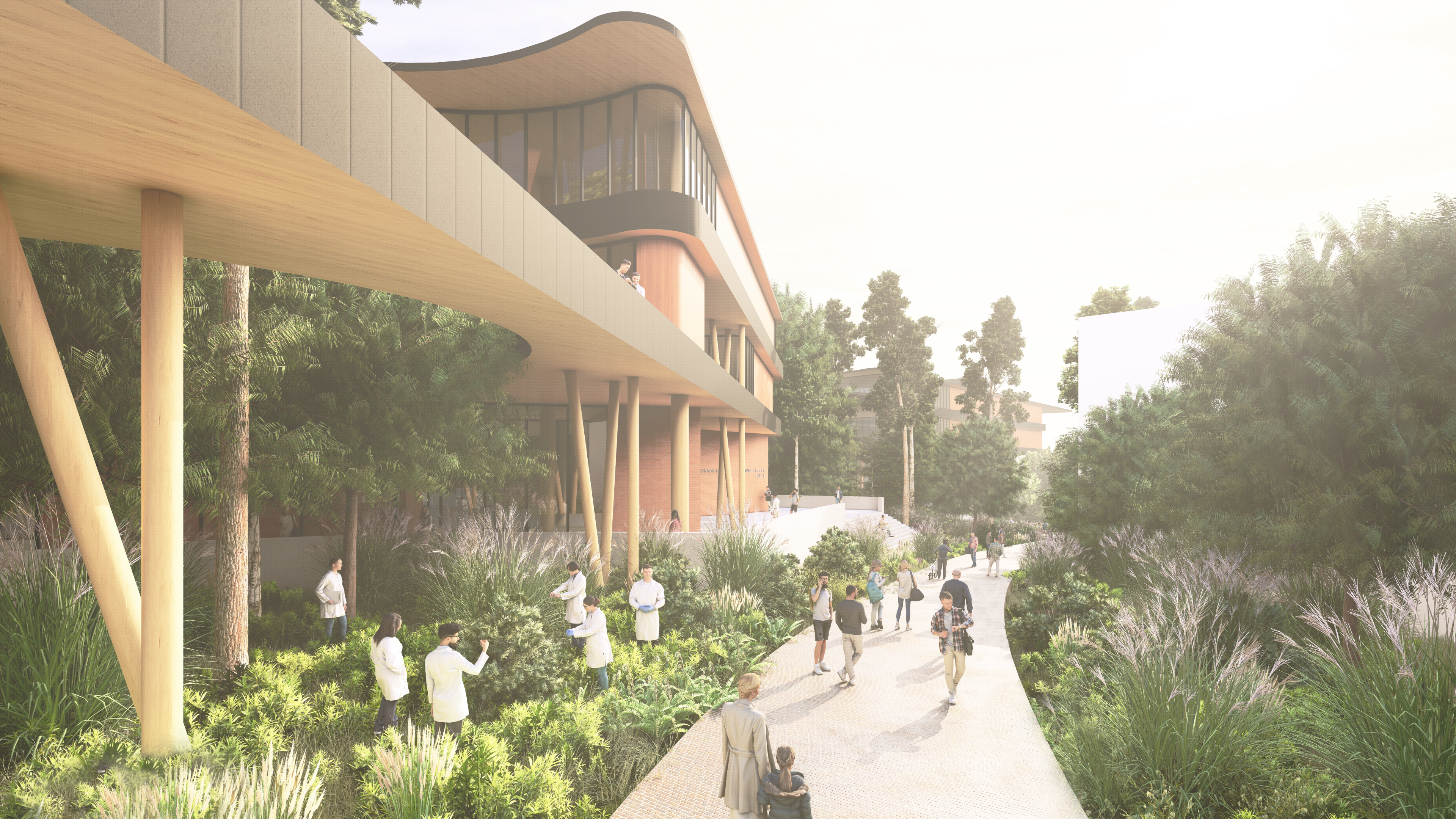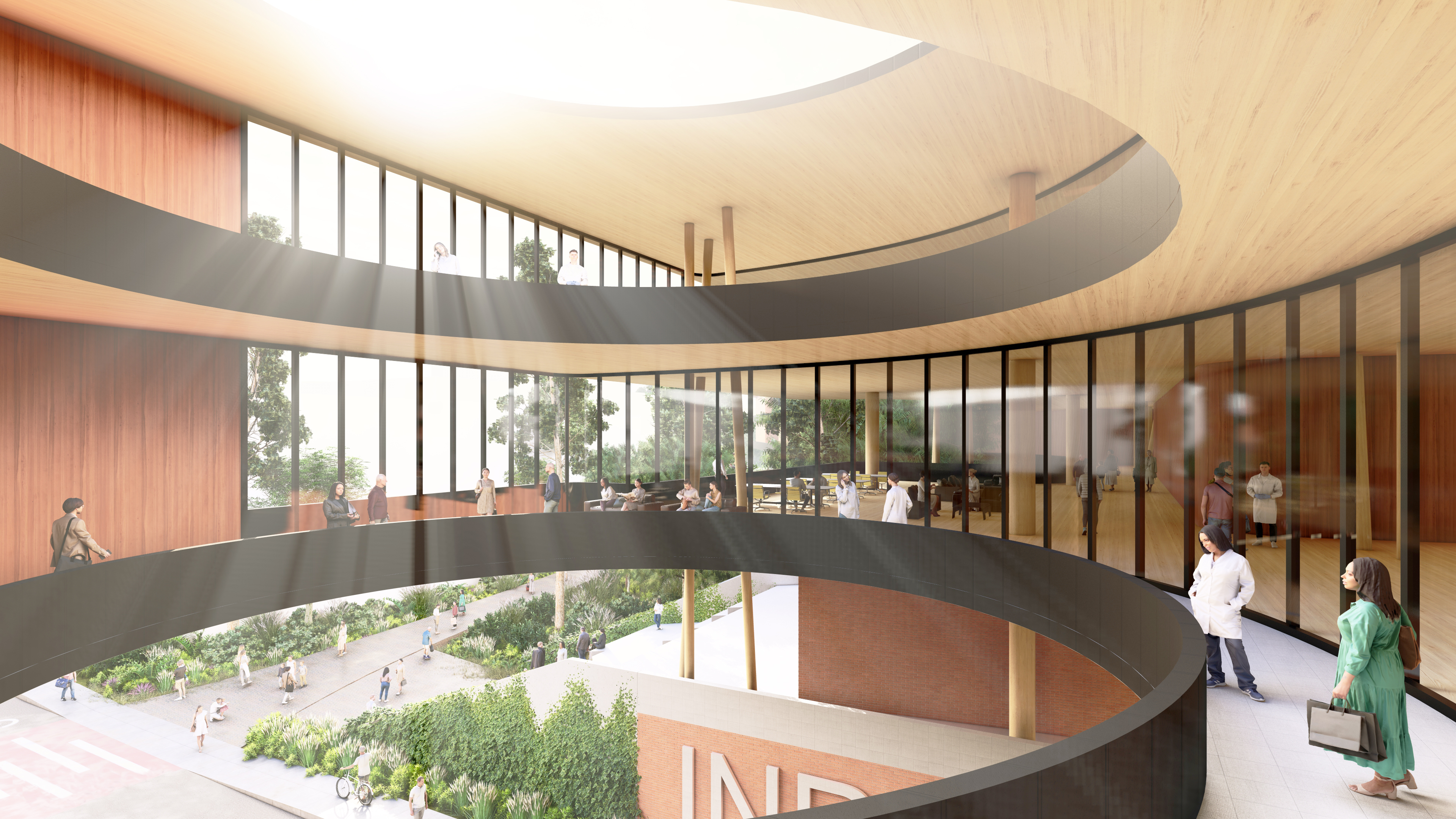Project Vision
The Integrated Natural Resources Building (INRB) at the University of Florida extends the natural landscape of McCarty Woods toward the UF North Lawn, creating a living laboratory that integrates major Florida ecotypes with educational spaces. Ground-floor pavilions connect lecture halls and research labs with representative examples of upland hardwood forests, flatwoods, urban forests, and bottomland riparian systems.
The building strategy focuses on an active learning landscape, incorporating a plinth and double-height forest corridor that links the site to Newins-Ziegler Hall, and facilitates pedestrian movement across McCarty Drive above street level. Upper levels connect existing facilities and provide elevated views, while maintaining the ground plane for public circulation.
The project emphasizes mass-timber construction, showcasing Southern Yellow Pine. It features a hybrid timber structure with columns, beams, and Cross-Laminated Timber (CLT) floors. The integration of architecture with the environment allows educators and students to engage with natural areas, and promotes an understanding of the synergy between built and natural landscapes.
Image 1.

Image 2.

Image 3.

Image 4.

The visioning and programming study for the INRB was made possible by a USDA Forest Service Wood Innovation Grant.
The development of this project introduced the University of Florida to mass-timber materials and construction methods. The project provides an opportunity for the University to evaluate its current building processes, and consider utilizing mass-timber not only for this building, but for future projects as well.
Aspects of the grant included connecting stakeholders to existing mass-timber projects at other universities, to regional manufacturing facilities, and to lumber mills to see the full process from forest to building.
The proposed building is being further evaluated for size and composition, with final design expected by 2027, and construction expected to be completed by 2030. Funding is expected to come from both the private and public sectors.
For more information, contact:
Scott A. Sager
UF/IFAS School of Forest, Fisheries, & Geomatics Sciences
sasager@ufl.edu





